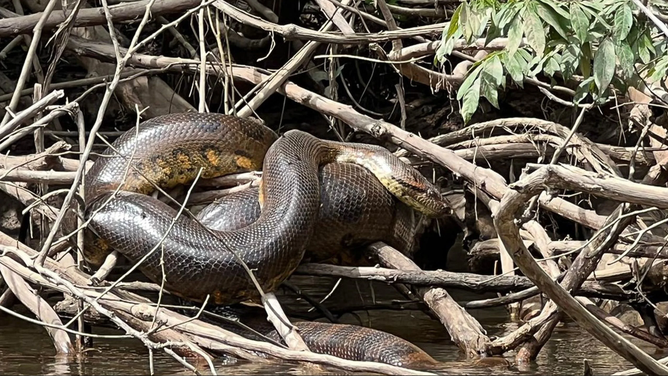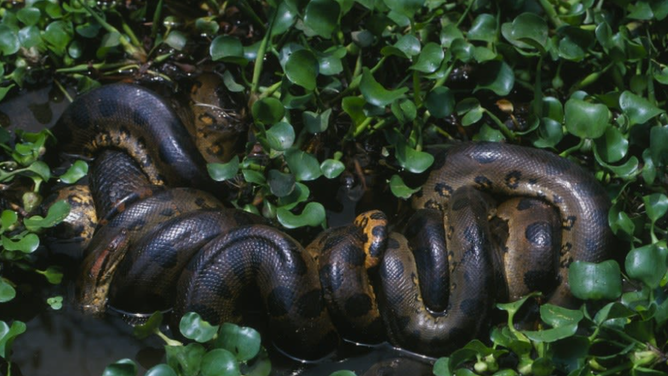Giant new snake species found in Amazon rumored to be world's largest, scientist says
The northern green anaconda is believed to live in and around South America. It is reported to be one of the largest and heaviest snakes in the world. Locals reported seeing snakes reaching around 20 feet long.
Rattlesnake season begins in Arizona
File: Rattlesnake removal expert Bryan Hughes joins FOX Weather to talk about rattlesnake season and safety.
Researchers in South America producing a new streaming video series said they discovered a previously undocumented species of anaconda that can grow to be more than 20 feet long.
The team led by a professor from Australia’s University of Queensland said they studied several specimens while deep in the Amazon rainforest.
The giant anacondas were found slithering in the river system, waiting for their prey.
"Our team received a rare invitation from the Waorani people to explore the region and collect samples from a population of anacondas, rumored to be the largest in existence," Professor Bryan Fry said in a statement.
During a 10-day expedition, the team encountered one of the now-named northern green anacondas, which measured 20 feet long.
"There are anecdotal reports from the Waorani people of other anacondas in the area measuring more than 7.5 meters (24 feet) long and weighing around 500 kilograms (1,100 pounds)," Fry stated.

The northern green anaconda is seen on a riverbank.
(Bryan Fry/The University of Queensland / FOX Weather)
MASSIVE BURMESE PYTHON CAUGHT SLITHERING THROUGH SWAMPS OF SOUTH FLORIDA
Researchers had previously worked under the assumption that green anacondas found throughout South America were part of the same species but have since started to label them as either the northern green anaconda or southern green anaconda.
Both are non-venomous carnivores but are said to differ genetically by 5.5%, which is significant in the animal world.
"It’s quite significant – to put it in perspective, humans differ from chimpanzees by only about 2 percent," Fry stated.
While the snake may be large compared to its counterparts on the continent, species of pythons in Southeast Asia give the snake a run for its money.
According to zoological reports, some pythons have reached at least 28 feet in length but weigh substantially less than the northern green anaconda.
SEE THE MASSIVE ALLIGATOR FOUND LURKING IN A SOUTH FLORIDA SWAMP

A northern green anaconda "breeding ball."
(Jesus Rivas/The University of Queensland / FOX Weather)
It remains a mystery how the snake species could slither under the proverbial radar of biologists for so long, especially in light of ecological threats.
"Deforestation of the Amazon basin from agricultural expansion has resulted in an estimated 20-31 percent habitat loss, which may impact up to 40 percent of its forests by 2050," Fry said.
The team plans to focus next on pollution in the Amazon and how it impacts crucial habitats.
"The discovery of a new species of anaconda is exciting, but it is critical to highlight the urgent need to further research these threatened species and ecosystems," Fry stated.
